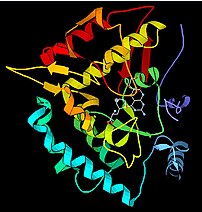
Science commons and other are organising a workshop on Open Science issues as a satellite meeting of the European Science Open Forum meeting in July.

Science commons and other are organising a workshop on Open Science issues as a satellite meeting of the European Science Open Forum meeting in July.

I spent today at an interesting meeting at Talis headquarters where there was a wide range of talks. Most of the talks were liveblogged by Andy Powell and also by Owen Stephens (who has written a much more comprehensive summary of Andy’s talk) and there will no doubt be some slides and video available on the web in future. The programme is also available.

Regular readers will know I am a great believer in the potential of Web2.0 tools to enable rapid aggregation of loose networks of collaborators to solve a particular problem and the possibilities of using this approach to do science better, faster, and more efficiently.

The Mars Phoenix landing has got a lot of coverage around the web, particularly from some misty eyed old blokes who remember watching landings via the Mosaic browser in an earlier, simpler age. The landing is cool, but one thing I thought was particularly clever was the use of Twitter by JPL to publicise the landing and what is happening on a minute to minute basis.

I realised the other day that I haven’t written an exciteable blog post about getting an invitation to SciFoo! The reason for this is that I got overexcited over on FriendFeed instead and haven’t really had time to get my head together to write something here.

Just a gentle reminder that the deadline for submissions for the Open Science Workshop at Pacific Symposium on Biocomputing is approaching. The purpose of the early deadline is so that we can give people plenty of notice that they have a talk so they or we can sort out funding. At this stage we really only need an abstract or even an outline so we can organise the program.

A story of two major retractions from a well known research group has been getting a lot of play over the last few days with a News Feature (1) and Editorial (2) in the 15 May edition of Nature. The story turns on claim that Homme Hellinga’s group was able to convert the E. coli ribose binding protein into a Triose phosphate isomerase (TIM) using a computational design strategy.

As has been noted in a few places, Neil Withers, one of the editors of soon to be newest Nature journal, Nature Chemistry put out a request last week for input on a range of issues to do with how people use journals, formats, and technical widgets. Egon Willighagen, Rich Apodaca, and Oscar the Journal Munching Robot (masquerading as Peter Murray-Rust, or is that the other way around?) have already posted responses.

Image from Wikipedia via Zemanta Following on from the discussion a few weeks back kicked off by Shirley at One Big Lab and continued here I’ve been thinking about how to actually turn what was a throwaway comment into reality: There is a problem at the core of this. For someone to pay for access to the results, there has to be a monetary benefit to them.

Image via Wikipedia Once again a range of conversations in different places have collided in my feed reader. Over on Nature Networks, Martin Fenner posted on Researcher ID which lead to a discussion about attribution and in particular Martin’s comment that there was a need to be able to link to comments and the necessity of timestamps.